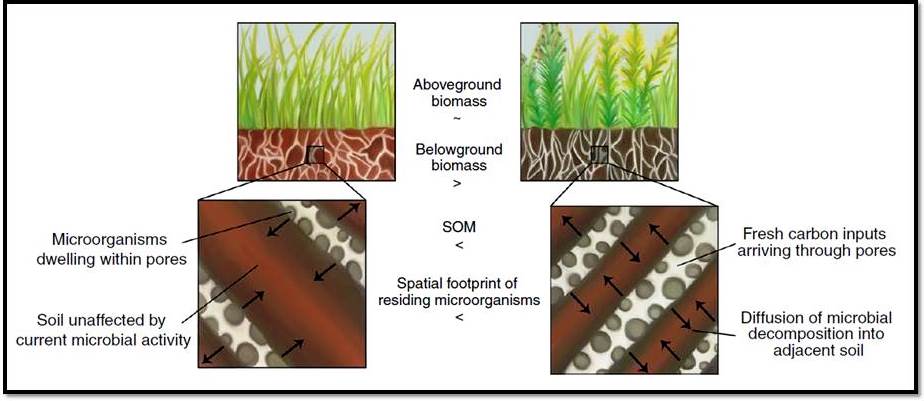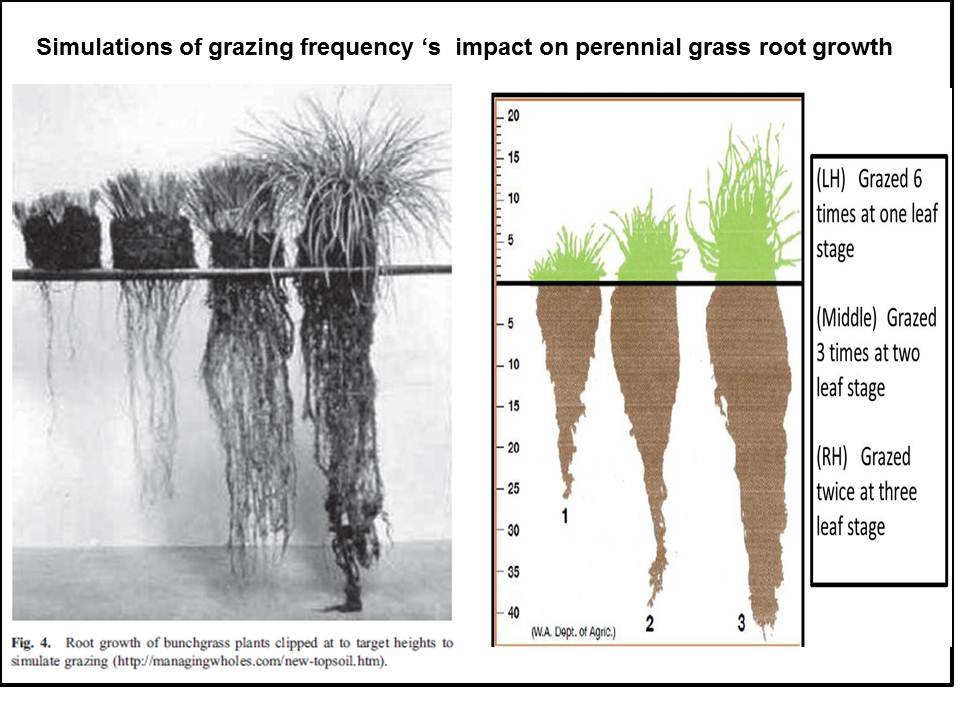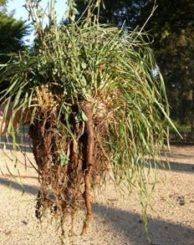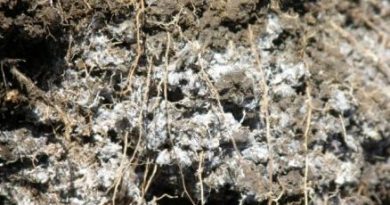Soil carbon – US research points to plant diversity and soil pore size as keys to storage
By Justin Whitmore
Alexandra Kravchenko, Michigan State University professor in the Department of Plant, Soil and Microbial Sciences, and several of her colleagues recently discovered a new mechanism determining how carbon is stored in soils that could improve the climate resilience of cropping systems and also reduce their carbon footprints.
The findings, published in July 2019 in the scientific journal Nature Communications, reveal the importance of soil pore structure for stimulating soil carbon accumulation and protection.
“Understanding how carbon is stored in soils is important for thinking about solutions for climate change,” said Phil Robertson, University Distinguished Professor of Plant, Soil and Microbial Sciences, and a co-author of the study. “It’s also pretty important for ways to think about soil fertility and therefore, crop production.”
Over a period of nine years, researchers studied five different cropping systems in a replicated field experiment in southwest Michigan. Of the five of the post-cropping systems, only the two with high plant diversity resulted in higher levels of soil carbon.
Kravchenko and her colleagues used X-ray micro-tomography and micro-scale enzyme mapping to show how pore structures affect microbial activity and carbon protection in these systems, and how plant diversity then impacts the development of soil pores conducive to greater carbon storage.
John Schade, from the NSF Division of Environmental Biology, said the results may transform the understanding of how carbon and climate can interact in plant and soil microbial communities.
“This is a clear demonstration of a unique mechanism by which biological communities can alter the environment, with fundamental consequences for carbon cycling,” Schade said.
“One thing that scientists always tend to assume is that the places where the new carbon enters the soil are also the places where it is processed by microbes and is subsequently stored and protected,” Kravchenko said. “What we have found is that in order to be protected, the carbon has to move; it cannot be protected in the same place where it enters.”
Scientists have traditionally believed soil aggregates, clusters of soil particles, were the principal locations for stable carbon storage. Recent evidence, however, shows that most stable carbon appears to be the result of microbes producing organic compounds that are then adsorbed onto soil mineral particles. The research further reveals that soil pores created by root systems provide an ideal habitat where this can occur.
Of particular importance are soils from ecosystems with higher plant diversity. Soils from restored prairie ecosystems, with many different plant species, had many more pores of the right size for stable carbon storage than did a pure stand of switchgrass.
“What we found in native prairie, probably because of all the interactions between the roots of diverse species, is that the entire soil matrix is covered with a network of pores,” Kravchenko said. “Thus, the distance between the locations where the carbon input occurs, and the mineral surfaces on which it can be protected is very short.
“So, a lot of carbon is being gained by the soil. In monoculture switchgrass the pore network was much weaker, so the microbial metabolites had a much longer way to travel to the protective mineral surfaces, figure 1,” explained Kravchenko.

Figure 1: Microbial footprint defines the soil volume available for C protection. Schematic representation of the effect that the abundance of 30–150 μm pores has on the size of the spatial footprint of microorganisms residing in such pores in perennial switchgrass monoculture and biodiverse native vegetation systems.
Robertson said the research may prompt farmers to focus on plant diversity when attempting to increase soil carbon storage.
“We used to think the main way to put more carbon in soil is to have plants produce more biomass either as roots or as residue left on the soil surface to decompose,” Robertson said. “What this research points out is that there are smarter ways of storing carbon than such brute force approaches. If we can design or breed crops with rooting characteristics that favour this kind of soil porosity and therefore that favour soil carbon stabilization, that would be a pretty smart way to design systems that can build carbon faster.”

Figure 2: This research questions the assumption that growing more pasture and root mass via one or two prolific grass species, will directly increase soil organic carbon over time.
Nick Haddad, director of the Kellogg Biological Station Long-term Ecological Research program, said research that builds from these findings will continue to discover ways to improve the sustainability of agricultural ecosystems and landscapes.
“Long-term research shows surprising ways that a diversity of plants can benefit the microbes needed for a resilient agricultural system,” Haddad added.
Find out more: A. N. Kravchenko et al. Microbial spatial footprint as a driver of soil carbon stabilization, Nature Communications (2019). DOI: 10.1038/s41467-019-11057-4
Provided by Michigan State University. 26 July 2019 Credit: CC0 Public Domain




